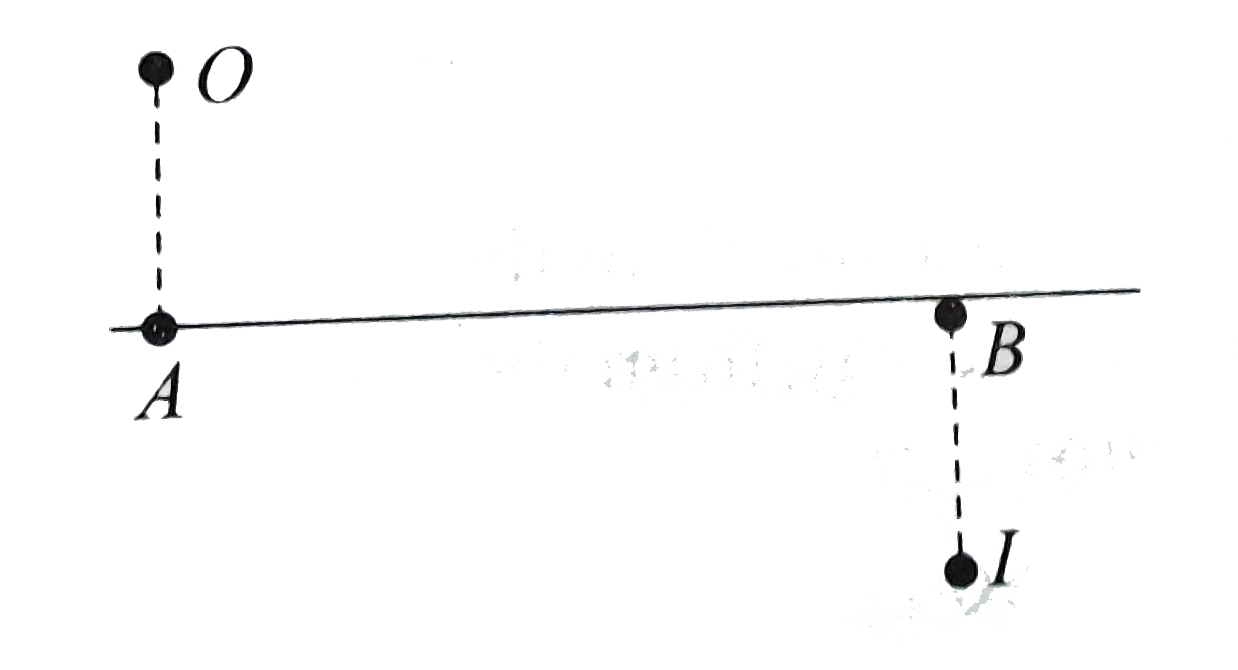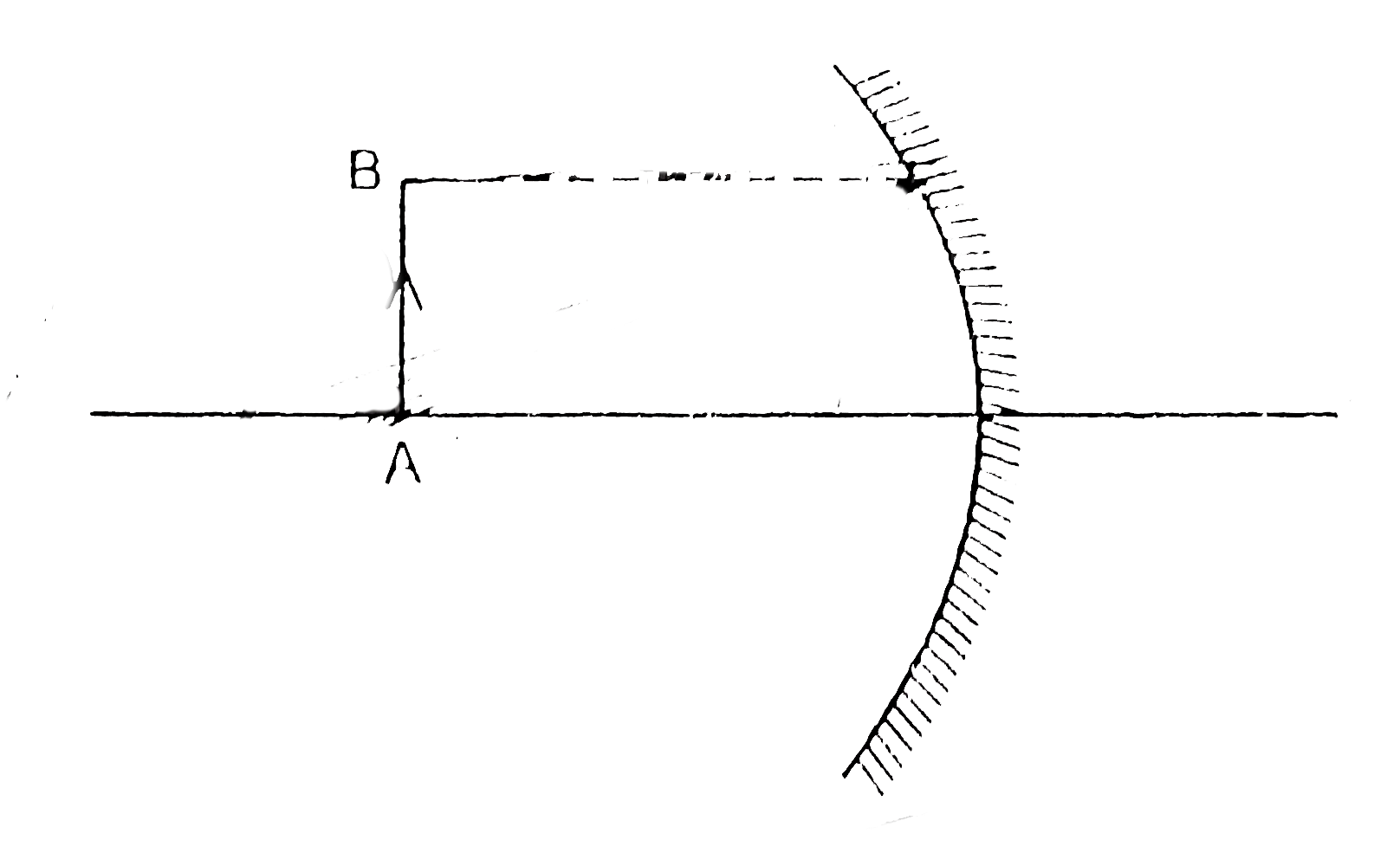I is the image of a point object O formed by spherical mirror, then which of the following statements is incorrect :
If O and I are on same side of the principal axis, the they have to be on opposite sides of the mirror.
If O and I are on opposite side of the principal axis, then they have to be on same side of the mirror.
If O and I are on opposite side of the principal axis, then they can be on opposite side of the mirror as well.
If O is on principal axis then I has to lie on principal axis only.
The correct Answer is:C
To determine which statement is incorrect regarding the image formed by a spherical mirror, we can analyze the relationships between the object distance (u), image distance (v), and their respective heights (h_o for object height and h_i for image height) using the magnification formula.
1. Understanding the Magnification Formula:
The magnification (m) is defined as:
m=hiho=−vu
Here, hi is the height of the image, ho is the height of the object, v is the image distance, and u is the object distance.
2. Analyzing the Statements:
We need to evaluate four statements regarding the positions of the object and image relative to the principal axis of the mirror.
3. Statement 1: If the object and image are on the same side of the principal axis (both above or both below).
- If both are above the principal axis, then ho>0 and hi>0.
- According to the sign convention, u is negative (object on the left) and v is also negative (image on the left).
- This statement is correct.
4. Statement 2: If the object and image are on opposite sides of the principal axis (object above and image below).
- Here, ho>0 and hi<0.
- Thus, v is negative (image on the left) and u is negative (object on the left).
- This statement is correct.
5. Statement 3: If the object and image are on the opposite side of the mirror.
- If the object is above the principal axis (positive height) and the image is below (negative height), we expect v to be positive (image on the right) and u to be negative (object on the left).
- This means that they cannot be on opposite sides of the mirror, making this statement incorrect.
6. Statement 4: If the object is on the principal axis, then the image lies on the principal axis.
- If the object is on the principal axis, both heights can be zero, leading to the image also being on the principal axis.
- This statement is correct.
Conclusion:
The incorrect statement is Statement 3.
The magnification (m) is defined as:
m=hiho=−vu
Here, hi is the height of the image, ho is the height of the object, v is the image distance, and u is the object distance.
We need to evaluate four statements regarding the positions of the object and image relative to the principal axis of the mirror.
- If both are above the principal axis, then ho>0 and hi>0.
- According to the sign convention, u is negative (object on the left) and v is also negative (image on the left).
- This statement is correct.
- Here, ho>0 and hi<0.
- Thus, v is negative (image on the left) and u is negative (object on the left).
- This statement is correct.
- If the object is above the principal axis (positive height) and the image is below (negative height), we expect v to be positive (image on the right) and u to be negative (object on the left).
- This means that they cannot be on opposite sides of the mirror, making this statement incorrect.
- If the object is on the principal axis, both heights can be zero, leading to the image also being on the principal axis.
- This statement is correct.
The incorrect statement is Statement 3.
Topper's Solved these Questions
- BOOK - RESONANCE ENGLISHCHAPTER - GEOMATRICAL OPTICS EXERCISE - Exercise-262videos
GEOMATRICAL OPTICS
- BOOK - RESONANCE ENGLISHCHAPTER - GEOMATRICAL OPTICS EXERCISE - Exercise-380videos
GEOMATRICAL OPTICS
- BOOK - RESONANCE ENGLISHCHAPTER - GEOMATRICAL OPTICS EXERCISE - Problem33videos
GEOMATRICAL OPTICS
- BOOK - RESONANCE ENGLISHCHAPTER - EXPERIMENTAL PHYSICSEXERCISE - PART -II10videos
EXPERIMENTAL PHYSICS
- BOOK - RESONANCE ENGLISHCHAPTER - GRAVITATIONEXERCISE - HIGH LEVEL PROBLEMS16videos
GRAVITATION
Similar Questions
The image of a real object formed by a plane mirror is -
View SolutionWhich of the following statements are incorrect for spherical mirror.
View SolutionNature of image of a real object formed by convex mirror is always
View SolutionA luminous point object is placed at O, whose image is formed at I as shown in Figure. Line AB is optical axis. Which of the following statement is/are correct?
 View Solution
View SolutionImage of an object in a convex mirror is
View SolutionA real object is moving toward a fixed spherical mirror. The image
View SolutionThe distance of an object from a concave spherical mirror is equal to the focal length of the mirror. Then the image.
View Solution
A converging mirror forms real image of object AB on screen. Now a hole is made on mirror just in front of point B, select incorrect options:View SolutionIf the image formed by a spherical mirror for all positions of the object placed in front of its is always erect and diminished , what type of mirror isit ? Draw a labelled ray diagram to support your answer.
View SolutionThe image of an object formed by a mirror is real, inverted and its of magnification -1. If the image is at a distance of 40 cm from the mirror, where is the object placed ? Where would the image be if the object is moved 20 cm towards the mirror? State reason and also draw ray diagram for the new position of the object to justify your answer.
View Solution

